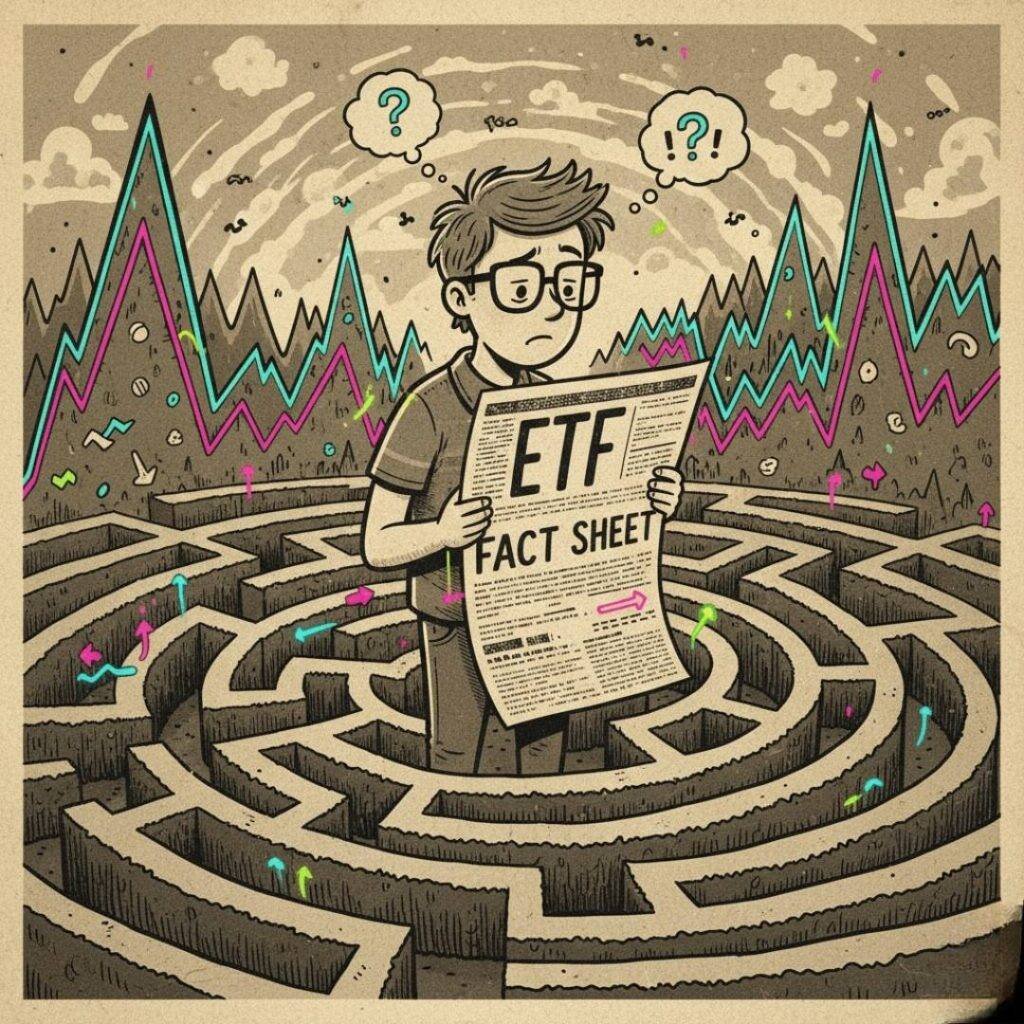My Messy Journey Into ETFs for Beginners
ETFs for beginners? Man, I’m still figuring this stuff out myself, sitting here in my tiny Brooklyn apartment, the radiator hissing like it’s judging my financial decisions. The other day, I was sipping lukewarm coffee from a mug that smells faintly of yesterday’s brew, scrolling through a trading app, and totally botching my first ETF purchase. Like, I accidentally bought shares in some obscure biotech fund because I thought “BIO” sounded cool. Spoiler: it wasn’t. That’s the kind of rookie mistake I’m here to help you avoid, with all the raw, unfiltered chaos of my own learning curve.
Exchange-traded funds—ETFs—are like these magical baskets of stocks, bonds, or whatever else, traded on the stock market like regular shares. They’re cheap, flexible, and honestly kinda dope for someone like me who’s too broke to buy individual stocks like Apple or Tesla without sweating rent money. But they’re also a bit of a maze, and I’ve tripped over every trap in it. Let me break it down, from one flustered newbie to another, with some hard-earned tips and a few embarrassing stories.
What Are ETFs, Anyway? My Crash Course in ETF Basics
Okay, so ETFs for beginners start with this: they’re funds that track stuff—like an index (think S&P 500), a sector (like tech or healthcare), or even weird things like gold or crypto. You buy one share, and boom, you own a tiny slice of everything in that basket. I learned this the hard way last month at a dive bar in Williamsburg, where I tried explaining ETFs to my buddy Jake over greasy nachos. I was like, “Dude, it’s like buying a playlist instead of one song.” He nodded, but I could tell he was lost. Honestly, I was too.
Here’s the deal:
- They’re cheap: ETFs usually have low fees (expense ratios) compared to mutual funds. I’m talking 0.03% to 0.5% annually for some, which is a steal.
- They’re flexible: You can trade them all day on apps like Robinhood or Fidelity, unlike mutual funds that only settle at day’s end.
- They’re diverse: One ETF can spread your money across hundreds of stocks, so you’re not screwed if one company tanks. (Looking at you, my BIO disaster.)
For more on what makes ETFs tick, check out Investopedia’s ETF guide. It’s where I started when I realized I needed to stop guessing.
Why ETFs Are a Beginner’s Best Friend (Mostly)
When I first got into ETF investing, I was living in a shoebox apartment in Queens, surrounded by takeout containers and a laptop that overheats if I open more than two tabs. I didn’t have the cash to mess with individual stocks, and the stock market felt like a casino where everyone but me knew the rules. ETFs were my lifeline because they let me dip my toes in without drowning. Like, I could buy into the SPY (tracks the S&P 500) and feel like a Wall Street bro without risking my grocery budget.
But here’s where I screwed up: I didn’t research enough. I bought into a random ETF because it had “green energy” in the name, thinking I was saving the planet. Turns out, it was heavy on volatile startups, and my $200 investment took a 20% nosedive in a week. Lesson? Read the fact sheet. Sites like ETF.com break down what’s inside each fund—super helpful for avoiding my dumb moves.

How to Start Investing in ETFs Without Losing Your Mind
Alright, let’s get practical. Here’s how I’d tell my younger, dumber self to start with ETFs for beginners, based on my current view from a noisy coffee shop in Manhattan, where the barista just spilled my latte and I’m pretending it’s fine.
Step 1: Figure Out Your Vibe
What do you care about? Tech? Healthcare? The whole dang market? I got obsessed with dividend ETFs because I liked the idea of passive income, like money just showing up while I binge Netflix. Check out funds like VOO (Vanguard’s S&P 500 ETF) or SCHD (Schwab’s dividend ETF) for starters. Vanguard’s ETF page has a solid list to browse.
Step 2: Pick a Platform
I use Fidelity because it’s got no commission fees on most ETFs, and their app doesn’t crash as much as my old one did. Robinhood’s fine for a quick start, but it’s a bit too gamified for my taste—like, I don’t need confetti when I buy $50 of VOO. Compare platforms on NerdWallet.
Step 3: Don’t Overthink It (But Don’t Be Me)
Start small. I threw $500 into QQQ (tech-heavy ETF) last year because I saw some TikTok dude hyping it. Bad move—tech was tanking. Diversify with something broad like VTI (total stock market ETF) to avoid my oopsies. And set a budget—I only invest what I can afford to lose, which isn’t much, considering my rent’s due in a week.

Mistakes I Made So You Don’t Have To
Oh man, where do I start? Besides the BIO fiasco, I once chased a “hot” ETF because it was trending on X. Spoiler: trends die fast. I lost $150 in a week. Also, I ignored expense ratios at first, thinking 1% was no big deal. Newsflash: it adds up. Stick to ETFs with ratios under 0.2% unless you’re sure the higher cost is worth it. Morningstar is great for comparing fees.
Another cringe moment: I didn’t understand leverage. I bought a 3x leveraged ETF thinking it’d triple my gains. Nope. Those are for day traders, not me, who checks my portfolio once a week while eating leftover pizza. Stick to simple ETFs until you’re ready to geek out.
ETFs for Beginners: My Biggest Aha Moments
Here’s what I wish I knew when I started:
- Patience is everything. ETFs are for the long game. I panicked when my VOO dipped 5% last month, but it’s back up now. Chill.
- Dividends are sexy. Getting a little cash every quarter from SCHD feels like finding $20 in my pocket.
- Taxes suck. Selling ETFs can trigger capital gains taxes. I learned this after cashing out $300 and owing Uncle Sam a chunk. Talk to a tax pro or read up on IRS rules.





